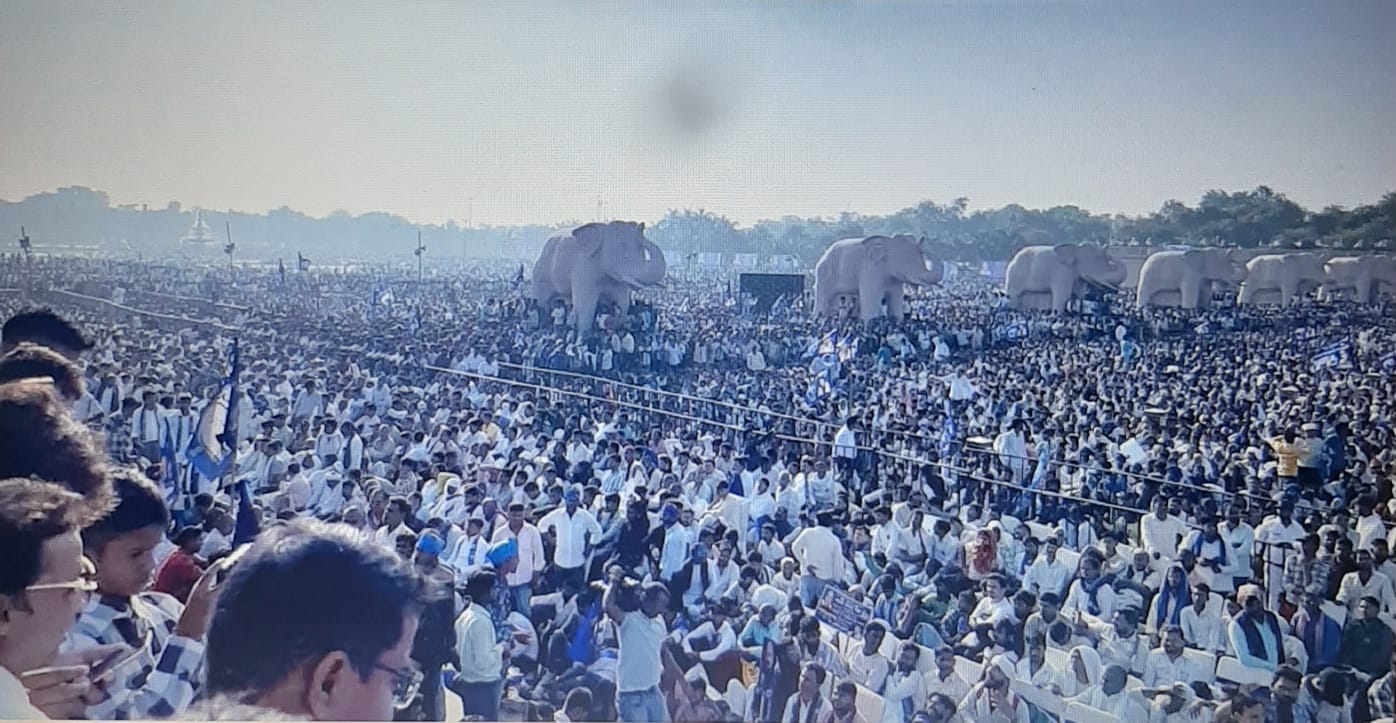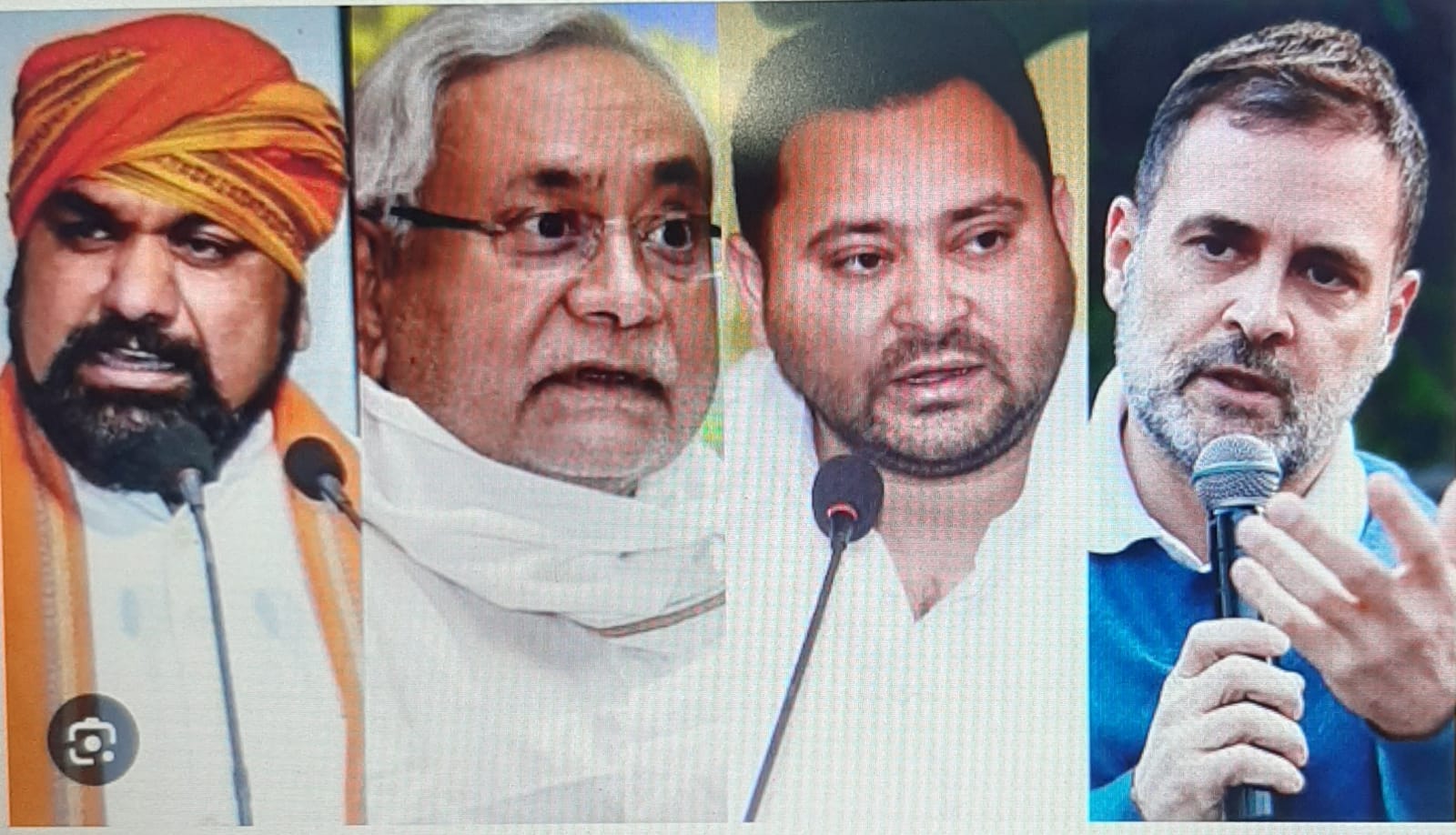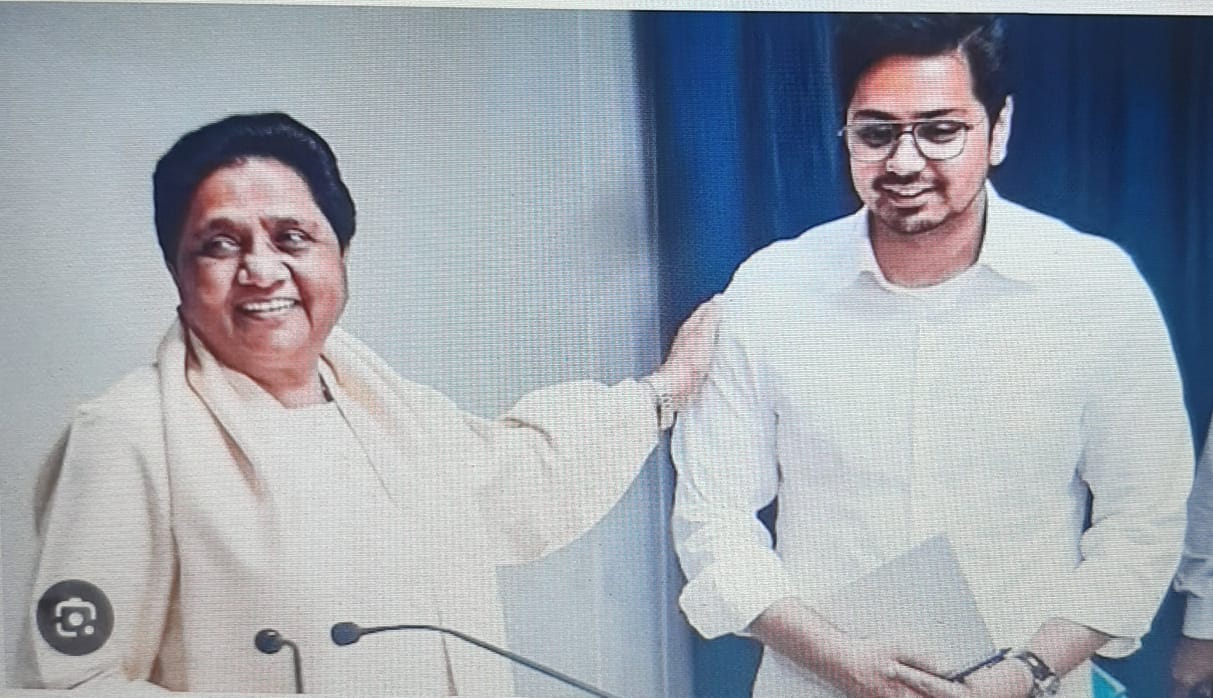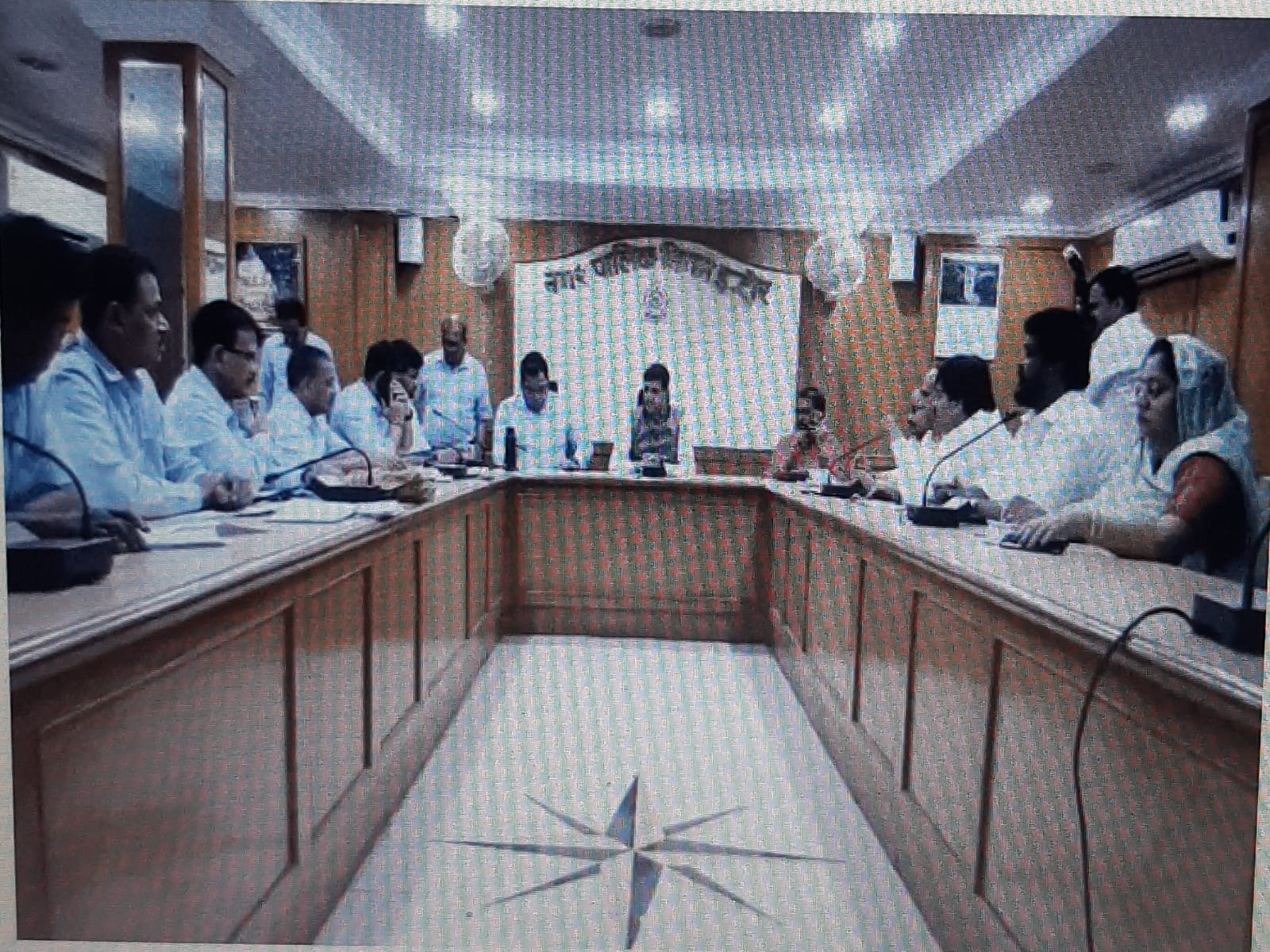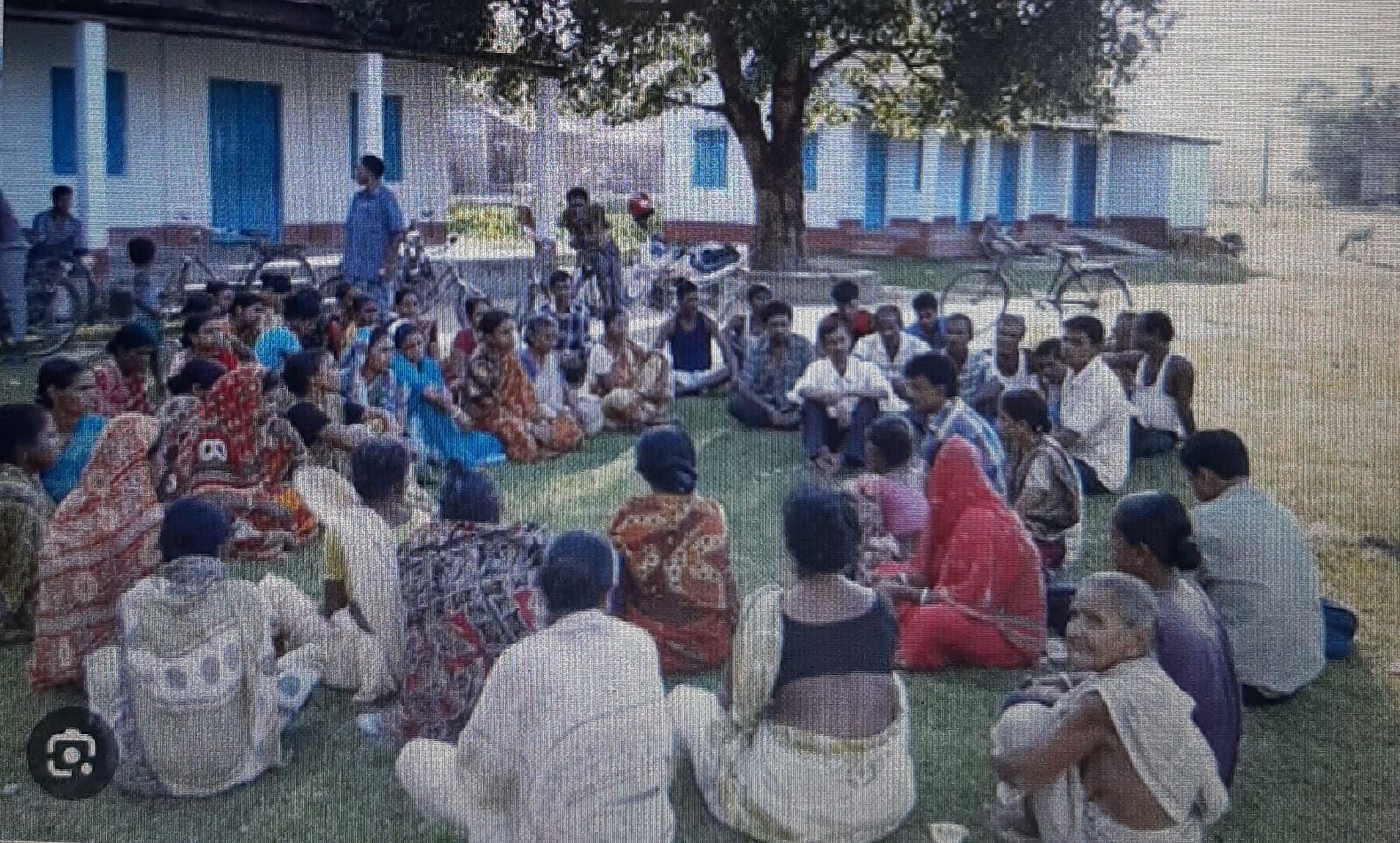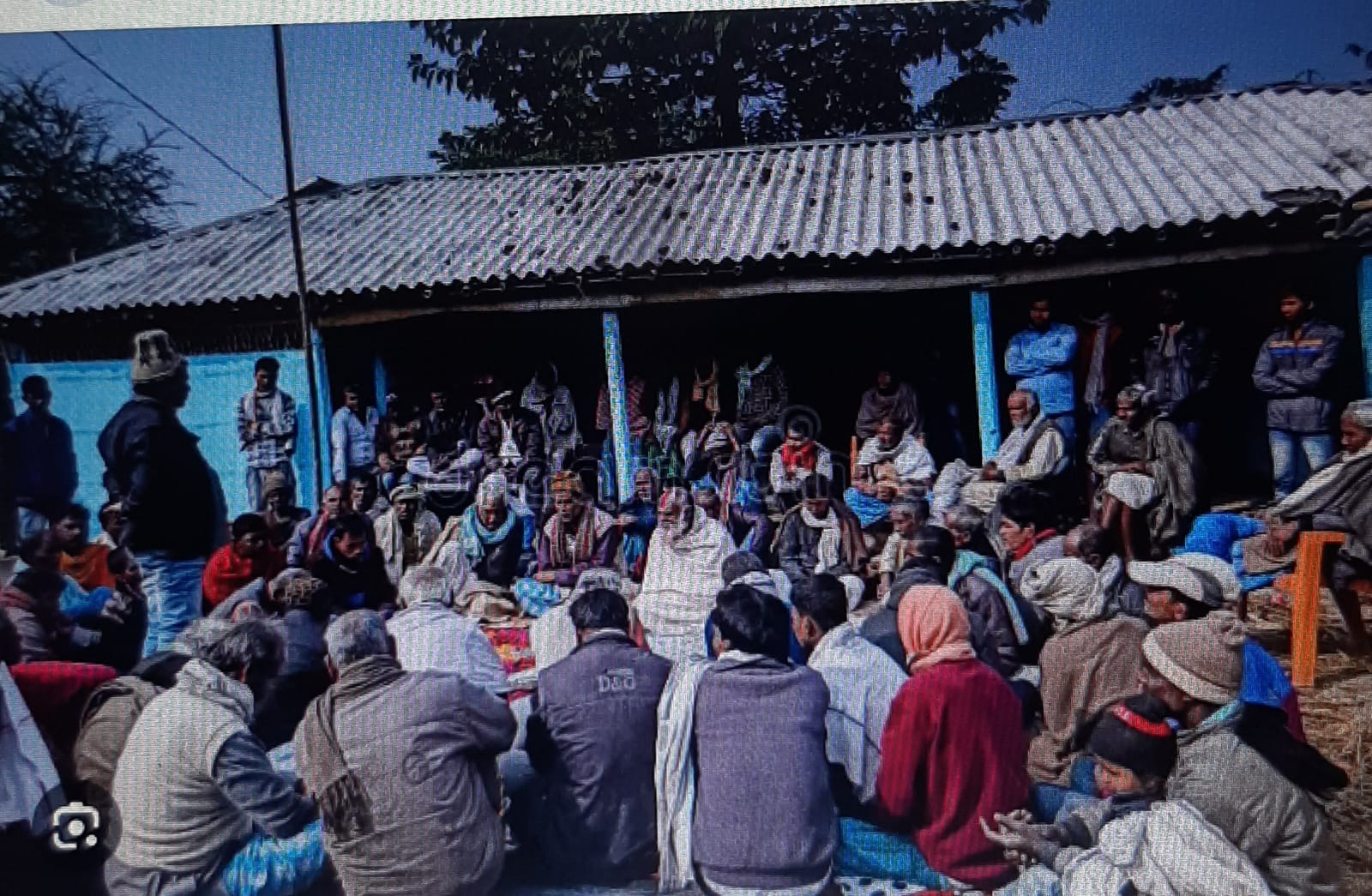
If local government is to emerge as the ‘nursery of democracy’ where leaders hone their skills and are prepared for assuming larger leadership roles in State and National politics, then they must be accorded due respect. Their time and effort would need to be valued. A beginning needs to be made with State Governments taking a hard look at what these elected representatives receive for their efforts, writes former IAS officer Sunil Kumar
The remuneration of elected representatives received fair deal of media attention in the last fortnight when the notification to raise the salary and pension of MPs by 24 percent based on the 2018 amendment to the Salary, Allowances and Pension of Members of Parliament Act, 1954 was issued by Government of India. As usual, newspaper reports focused on the remuneration of MPs and MLAs and totally ignored the elected representatives of local governments. In this paper my focus would be on the issue of remuneration of elected representatives of local governments.
A report published in The Indian Express revealed that between 1954 to 2025, the salary of MPs has risen by more than 400 times while per capita monthly income (at constant 2011-12 prices) has risen by eight times, from Rs.1,131 in 1953-54 to Rs.9,363 in 2024-25 as per the 2024-25 Economic Survey.[i] Further, the same report pointed out that the average assets owned by a MP is now Rs.40.34 crore and outpaces the growth rate of Indian economy by a mile.
The breakdown of a MP’s monthly salary is now as under: Basic salary – Rs.1,24,000; constituency allowance – Rs.70,000; office allowance – Rs.60,000; Daily allowance – Rs.2000 during Parliamentary sessions. In addition to this, MPs also get an allowance of Rs 1.5 lakh annually for phone and internet usage. They enjoy 34 free domestic flights per year for themselves and their families, and first class train travel at any time for professional and personal use. They can also claim mileage allowance when they use roads. MPs also enjoy the benefits of 50,000 free units of electricity and 4,000 kilolitres of water annually. During their five-year term, MPs are provided with rent-free housing. Individuals who opt not to utilise the official accommodations are eligible to receive a monthly housing allowance of Rs 2,00,000. Free medical care is available to MPs.
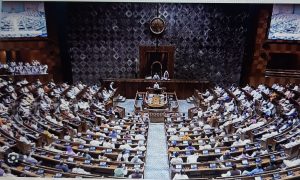
It may be noted that until February 2018, Parliament had the power to pass laws to revise the salaries of MPs. Then, through the Finance Act, 2018, Parliament amended the Salary, Allowances and Pension of Members of Parliament Act, 1954 to increase the salary, daily allowance, and pension of MPs every five years on the basis of the Cost Inflation Index published under the Income Tax Act, 1961. It may be of interest to note that in UK, in the aftermath of the expenses scandal in 2009, the Independent Parliamentary Standards Authority (IPSA) was established by the Parliamentary Standards Act 2009. IPSA is required to review the existing determination on Members’ salaries in the first year of each Parliament and at any other time it considers appropriate. Salary of MPs in UK is linked to rise in public sector pay.[ii]
A study by ADR published in December 2023[iii] revealed that the average assets per MP for 385 BJP MPs was Rs 18.31 crore while 81 Congress MPs had average assets of Rs 39.12 crore. The corresponding figures of MPs belonging to some major regional parties like AITC was Rs. 8.72 crore, YSRCP Rs. 153.76 crore and TRS was Rs. 383.51 crore. Eight NCP MPs had average assets worth Rs 30.11 crore while 11 AAP MPs had average assets of Rs 119.84 crore.
The situation is no different when we analyse the salary and perks of MLAs. In eighteen States, the average monthly salary of MLAs exceeds that of MPs[iv]. A poor State like Jharkhand gives the highest salary to it’s MLAs at Rs 2.88 lakh a month. It is followed by Maharashtra at Rs 2.61 lakh, Manipur and Telangana at Rs 2.5 lakh each, Himachal Pradesh at Rs 2.1 lakh, and Karnataka at Rs 2.05 lakh. The lowest earning MLAs are in Kerala (Rs 70,000 per month), Assam (Rs 80,000), Tripura (Rs 84,000), Delhi (Rs 90,000), and Punjab (Rs 94,000).
Unlike Government of India which has delinked hike in salary of MPs from public scrutiny as getting the Parliament to pass a new Act every time was ‘bad optics’, to say the least, State Assemblies still need to approve any increase in salary and allowances of MLAs.
In fact, politics seems to have been virtually taken over by the rich. Almost 93 percent of MPs of 17th Lok Sabha are crorepatis.[v] Even the number of crorepati candidates is growing with each general election. An analysis of types of luxury cars owned by MPs and MLAs would perfectly reveal the changing profile of our elected representatives. Thus, we can safely conclude that we have very rich elected representatives representing poor people if we look at the salary, allowances and assets of MPs and MLAs.
However, if we compare the remuneration of Indian MPs with those of their counterparts in USA, UK, Germany, France, Australia, Italy or Japan, then we notice that their remuneration ranges between Rs.70 lakh to Rs.1.5 crore per annum while those of Indian MPs would come to about Rs.60 to 70 lakh per annum (inclusive of all perks). In most countries they are not entitled to free accommodation. Given that the per capita income of the aforementioned democracies is much higher than India, the remuneration received by Indian MPs compares very favourably.
But the situation changes when we examine the remuneration paid to elected representatives of local governments: the third tier of government. This is the tier closest to the people and has the largest number of elected representatives. Consider the ratio vis a vis MPs and MLAs – almost 33 lakh elected representatives to five thousand odd MPs and MLAs.
Table 1: Monthly remuneration of ERs of three tier Rural Local Governments
| Uttar Pradesh
Gram Pradhan – Rs.5,000
Ward Member – Rs.100 per meeting (maximum of Rs.1200 per annum)
Uttar Pradesh Block Pramukh – Rs.11,300
Member – Rs.1000 per meeting (maximum six meetings per annum)
Chairman, ZP – Rs.15,500
Member – Rs.1500 per meeting (maximum six meetings per annum)
|
Jharkhand
Mukhiya,Gram Panchayat – Rs.2,500 Up Mukhiya – Rs. 1,200 Ward Member – Rs.500
Jharkhand Chairperson, Panchayat Samiti – Rs.8,000 Vice Chairperson – Rs. 4,000 Member – Rs.1,000
Chairperson, ZP – Rs.12,000 Vice Chairperson – Rs. 10,000 Member – Rs. 2,500 |
Himachal Pradesh
Pradhan,GramPanchayat – Rs.7,200 Up Pradhan – Rs. 4,800 Ward Member – Rs.750 per meeting not exceeding two per month
Himachal Pradesh Chairperson, Panchayat Samiti – Rs.11,400 Vice Chairperson – Rs. 8,400 Member – Rs.7,200
Chairperson, ZP – Rs.24,000 Vice Chairperson – Rs.18,000 Member – Rs.7,800 |
| Andaman & Nicobar Islands
President, Gram Panchayat – Rs.5,863 Vice President – Rs.4,888 Ward Member – Rs.3,519
Chairperson, Panchayat Samiti – Rs.7.813 Vice Chairperson – Rs.5,863 Member – Rs.4,888
Chairperson, ZP – Rs.9,769 Vice Chairperson – Rs.7,813 Member – Rs. 5,863
|
Madhya Pradesh
Sarpanch,Gram Panchayat – Rs.4,250 Up Sarpanch – Rs.300 per meeting (subject to maximum of Rs.1800 per annum) Panch – Rs.300 per meeting (subject to maximum of Rs.1800 per annum)
Chairperson,Janpad Panchayat – Rs.19,500 Vice Chairperson – Rs.13,500 Member – Rs.4,500
Chairperson, ZP – Rs.35,000 (plus vehicle allowance of Rs,65,000 per month) Vice Chairperson – Rs. 28,500 (plus vehicle allowance of Rs.13,500 per month) Member – Rs.13,500
|
Telangana
Sarpanch,Gram Panchayat – Rs.6,500 Up Sarpanch – Rs. Ward Member – Rs.
Chairperson, Panchayat Samiti – Rs.13,000 Vice Chairperson – Rs. Member – Rs.6,500
Chairperson, ZP – Rs.13,000 Vice Chairperson – Rs. Member – Rs. 6,500
|
| Odisha
Pradhan,Gram Panchayat – Rs.10,000 Up Pradhan – Rs.4,000 Ward Member – Rs.480 per meeting not exceeding two per month
Chairperson, Panchayat Samiti – Rs.15,000 Deputy Chairperson – Rs. 7,500 Member – Rs.7,500
Chairperson, ZP – Rs.30,000 Vice Chairperson – Rs.20,000 Member – Rs.10,000 |
Kerala
President,Gram Panchayat – Rs.13,200 Vice President – Rs. 10,600 Standing Committee Chairman – Rs. 8,200 Ward Member – Rs.7000
Chairperson, Panchayat Samiti – Rs.14,600 Vice Chairperson – Rs.12,000 Standing Committtee Chairman – Rs.8,800 Member – Rs.7,600
Chairperson, ZP – Rs.15,800 Vice Chairperson – Rs.13,200 Standing Committee Chairman – Rs.9,400 Member – Rs.8,800 |
Bihar
Mukhiya,Gram Panchayat – Rs.5,000 Up Mukhiya – Rs. 2500 Ward Member – Rs.800
Chairperson, Panchayat Samiti – Rs.10,000 Vice Chairperson – Rs. 5,000 Member – Rs.1,000
Chairperson, ZP – Rs.12,000 Vice Chairperson – Rs.10,000 Member – Rs.2,500 |
These elected representatives of local governments do not receive any salary. They receive an honorarium. A perusal of Table 1 shows that the remuneration of a Sarpanch / Mukhiya / Pradhan of a Gram Panchayat is well below even the wages fixed under MGNREGS (which again is well below the statutory minimum wages notified by the Labour department) even in the most progressive State such as Kerala with strong and effective local governments.[vi]
Local governments, being closest to the people are performing host of agency functions for both Union and State Governments. Additionally, they are also expected to provide a variety of services to the residents and perform planning and monitoring functions over 29 items listed in the Eleventh Schedule. Both Union and State governments are increasingly entrusting more functions to them though these are often ‘unfunded mandates’ and accordingly remain on paper.
The Gram Panchayat office is now variously addressed as Gram Panchayat Secretariat in different States and is expected to open and function as a regular office where citizens can receive variety of services and access important information. This requires regular presence of Gram Panchayat functionaries as well as officials. Local governance is no longer a ‘part time’ activity. It requires full time attention. Ministry of Panchayati Raj had also issued an advisory to States regarding nomination of ward members, in turn, as the ‘Day officer’ who would be present in the Panchayat Secretariat and oversee the functioning of the office on the appointed day. They were also requested to activate the statutory Standing Committees and remove any bar on number of meetings.[vii]
Yet States persist in paying only lip service to strong local government. If local government is to emerge as the ‘nursery of democracy’ where leaders hone their skills and are prepared for assuming larger leadership roles in State and National politics, then they must be accorded due respect. Their time and effort would need to be valued. A beginning needs to be made with State Governments taking a hard look at what these elected representatives receive for their efforts.
It is certainly unfair to not pay them even the basic minimum wages that are due to even an unskilled labourer. Thus, the minimum salary due to any elected ward member should be Rs.12,000 per month @ Rs. 400 per day. This surely is not unreasonable. Then we can expect them to shoulder responsibilities as Chairman and members of Standing Committees and Gram Panchayat. Likewise, the salary of the Pradhan/ President and Up Pradhan/Vice President should be Rs.30,000 and Rs.18,000 per month respectively.
The remuneration of Presidents and Members of Block and District Panchayats also need to be suitably amended. The powers and functions of Block Panchayats and District Panchayats need to be suitably defined and these need not replicate those of Gram Panchayat members and/or Sarpanch. Their salary, allowances would need to be commensurate with their role and functions. Instituions such as ‘Guardian Minister’ must be immediately disbanded. District Panchayat must include members from both rural and urban constituencies as suggested by the Second Administrative Reforms Commission. The institution of District Government must come up with District Collector serving as the Chief Secretary to the District Government (as had been introduced by Karnataka in the 1980s).
States must put in place a mechanism for periodic revision of the salary and allowances of all elected representatives based on what has been introduced for MPs. The practice of announcing ad-hoc revision of honorarium for Panchayat leaders before State Assembly elections (seen in several States) must be stopped forthwith.
This issue has been hanging fire in almost all States. The most obvious question that arises is as to who would bear the financial cost of any such decision. Government of India would wash it’s hand off by saying that local government is a State subject and the cost should be borne by the State Government. Local governments, in turn, would say that they hardly have any own source of revenue and grants received from Government of India based on recommendation of Central Finance Commission are specifically barred from being used for this purpose. Same is true of funds devolved based on recommendations of State Finance Commission. This is an important matter and needs close examination.
Table 2: Estimated Annual Expenditure
| Gram Panchayat & Traditional Bodies | Number | Proposed Remuneration | Annual Expenditure |
| Sarpanch / President | 2,69,118 | Rs.30,000 per month
|
Rs.9,688.248 crore |
| Ward Members | 26,34,159 | Rs.15,000 per month | Rs.47,414.862 crore |
| Total | 29,03,277 | Rs. 57,103.110 crore | |
| Block Panchayat | 6829 | ||
| Chairperson | 6,829 | Rs.40,000 per month | Rs.327.792 crore |
| Members | 1,73,171 | Rs.20,000 per month | Rs.4156.104 crore |
| Total | 1,80,000 | Rs. 4483.896 crore | |
| District Panchayat | 659 | ||
| Chairperson | 659 | Rs.50,000 per month | Rs.39.54 crore |
| Members | 16,858 | Rs. 30,000 per month | Rs.606.888 crore |
| Total | 17,527 | Rs.646.428 crore | |
| Grand Total | Rs.62,233.434 crore |
Taking into account the notified Minimum Wages by States and a reasonable remuneration for the elected representatives of all three tiers of rural local governments, the total annual expenditure comes to around Rs.62,233 crore (see Table 2 above). If Gram Panchayats are reorganized to ensure their administrative and financial viability, then the number of GPs could get reduced by almost 50 percent. In such a scenario, even if the number of ward members are increased in the reorganized GP, the total expenditure is likely to be substantially reduced.
Table 3: Comparative Chart of Bihar and Uttar Pradesh Expenditure
| Uttar Pradesh | Bihar | |||||||
| Gram Panchayat | Number of ERs | Proposed Remuneration | Annual Expenditure | Revised Number of ERs | Revised Annual Expenditure | Numberof ERs | Proposed Remuneration | Annual Expenditure |
| Sarpanch / President | 58,757 | Rs.30,000 | Rs.2115.252 crore | 25,000 | Rs.900.00 crore | 8387 | Rs.30,000 | Rs.301.932 crore |
| Ward Members | 6,86,810 | Rs.15,000 | Rs.12,362.58 crore | 5,00,000 | Rs.9000.00 crore | 1,06,346 | Rs.15,000 | Rs1914.228 crore |
| Total | 7,45,567 | Rs.14,477.832 crore | Rs.9900 crore | 1,14,733 | Rs. 2216.16 crore | |||
| Block Panchayat | 824 | 824 | 534 | |||||
| Chairperson | 824 | Rs.40,000 | Rs.39.552 crore | 824 | Rs.39.552 crore | 534 | Rs.40,000 | Rs. 25.632 crore |
| Members | 76,945 | Rs.20,000 | Rs.1846.68 crore | 76,945 | Rs.1846.68 crore | 10,963 | Rs.20,000 | Rs.263.112 crore |
| Total | 77,769 |
|
Rs.1886.232 crore | 77,769 | Rs.1886.232 crore | 11,497 | Rs.288.744 crore | |
| District Panchayat | 75 | 75 | 38 | |||||
| Chairperson | 75 | Rs.50,000 | Rs.4.50 crore | 75 | Rs.4.50 crore | 38 | Rs.50,000 | Rs.2.28 crore |
| Members | 3,047 | Rs.30,000 | Rs.109.692 crore | 3,047 | Rs.109.692 crore | 1123 | Rs.30,000 | Rs.40.428 crore |
| Total | 3122 | Rs.114.192 crore | 3122 | Rs.114.192 crore | 1161 | Rs.41.708 crore | ||
| Grand Total | Rs.
16,478.256 crore |
Rs. 11,900.424 crore | Rs.
2546.612 crore |
|||||
Source: The number of PRIs and elected representatives has been sourced from Chapter 9 – Rural Development Statistices published by NIRDPR, Hyderabad (as on 4.12.2020)
In Table 3, it has been shown that with current level of elected representatives, the annual expenditure in Uttar Pradesh comes to about Rs.16,478 crore while in neighbouring Bihar, which has larger Gram Panchayats (closer to the optimum size), the annual expenditure would be about Rs.2546 crore at the proposed honorable and reasonable level of remuneration for all elected representatives of rural local government. Howeve, if the size of a Gram Panchayat is increased to a population size of about 8000, then the number of GPs in Uttar Pradesh could fall drastically to around 25,000 from the current level of 58757. Similarly, if the number of wards is redrawn and fixed at 20 per GP, even then there would be considerable reduction in the number of ward members. The net result of proposed reorganization would be a saving of over Rs.4500 crore per annum.
Thus, there is a very strong case for States to set up a statutory Delimitation Commission headed by a serving or retired Judge of the High Court and other members to redraw the boundaries of GPs so as to make them administratively and financially viable units. The optimal size of Gram Panchayats in Kerala is widely recognized as one of the contributory factors in better performance of GPs compared to those in the northern States which have large number of very small GPs (population below 2000).
Likewise, it is high time GPs are allowed to levy property tax and user charges for services rendered in all States. Payment of ‘agency fee’ for agency functions rendered by Gram Panchayats for Central and State schemes by Union and State governments would also go a long way in improving their financial position. One sixth share in both CGST and SGST to urban and rural local governments, as suggested by Dr.Vijay Kelkar, former Chairman of XIIIth Finance Commission would give them the financial wherewithal to bear their share of the burden of payment of ‘reasonable’ remuneration to elected representatives. This is a necessary expenditure and cannot be deferred for long as ultimately citizens pay much more in terms of time and opportunity cost of inefficient and delayed service delivery.
Good governance does not come free. As the the fifth largest economy (on way to becoming the third largest economy by 2027) and the world’s largest democracy, we must realize that elected representatives of local governments must be treated as leaders and not class IV employees of State Government. If we will give them respect by first not taking their work for free (begaar labour) as provided in Article 23 of the Indian Constitution, then a very important baby step would have been taken towards establishing a transparent, accountable and responsive local government.
The age and education profile of Panchayat leaders is fast changing. Most Panchayat leaders are now young (below the age of 35 years) and better educated. Even engineers and management graduates are looking at joining public services and contesting elections. Unless they receive a fair and honorable remuneration for their time and effort, they may soon become disillusioned and refrain from electoral politics altogether.
It is time to dispel the image of Gram Panchayats being hot beds of corruption (as symbolized by the Mahindra Scorpio vehicle of Gram Pradhans that seemed to materialize almost immediately after their election). New institutions and practices would need to be put in place to curb corruption in local governments.
A transparent mechanism to address issues relating to salary and allowances of elected representatives at all three tiers of government is urgently required. We should not grudge a reasonable remuneration structure for the elected representatives. Good governance should be recognized as the birthright of citizens in independent India and that requires strong, effective leadership in local governments. Active citizen participation in local governance and strong audit and accountability mechanisms are essential for good governance.
To conclude, it must be remembered that longevity of democracy depends upon citizens realizing their responsibility and discharging it willingly. New and responsible citizenry is sine qua non for having effective democracy and good governance.
*************************
(Sunil Kumar is a visiting faculty in Gokhale Institute of Politics and Economics and a member of Pune International Centre. He is also a former civil servant. Views expressed are personal.)
[i] Tracking how MPs’ salaries have increased over the decades: How hikes are decided; The Indian Express, 27th March, 2025
[ii] Research Briefing by Richard Kelly, 27 March, 2024; Members’ Pay and Expenses 2023/24; House of Commons Library Number 9995; https://researchbriefings.files.parliament.uk/documents/CBP-9995/CBP-9995.pdf
[iii] IANS – 09/12/2023 https://www.latestly.com/india/news/adr-report-on-assets-of-mps-763-sitting-mps-have-rs-29251-crore-assets-385-mps-have-assets-worth-rs-7051-crore-5406702.html
[iv] ₹2,000 basic salary in 2025? You might be earning more than a Kerala MLA: Are you curious about the salaries and allowances of Members of the Legislative Assembly (MLAs)? Discover the pay breakdowns across various states; Gulam Jeelani, The Mint, Updated 28 Mar 2025
[v] At least 93% of Lok Sabha poll winners are crorepatis: ADR analysis – The Hindu – June 06, 2024 05:13 pm IST – New Delhi; https://www.thehindu.com/news/national/at-least-93-of-lok-sabha-poll-winners-are-crorepatis-adr-analysis/article68258651.ece
[vi] The Minimum Wages for IT workers in Grade E to Grade A ranges between Rs.20,342 to Rs.25,152 per month in Thiruvananthapuram w.e.f.January, 2025
[vii] In a reply given to Parliament on 7th December, 2021 Lok Sabha was informed that the Ministry of Panhayati Raj seeks to transform Gram Sabhas as vibrant democratic institutions at the grass-roots level. In this regard, a detailed advisory has been issued to States in August 2021. As the role of Ward Members of Gram Sabha is important for the efficient functioning of the Gram Panchayats, States have been advised that Ward Members of the Gram Panchayats should invariably be made members of various Sub-Committees of Gram Panchayats. Further, in order to incentivize participation of the Ward Members in these Sub-Committees, payment of honorarium/sitting fees up to Rs.1000/- per month has been suggested from the own source of revenues of the Gram Panchayats or from State Government’s assistance to the Gram Panchayats. In case of services provided by the Gram Pradhan/Sarpanch to these Committees, the honorarium/sitting fees for such services have been suggested to be upto Rs.5000/- per month from the own source of revenues of the Gram Panchayats or from State Government’s assistance to the Gram Panchayats. The Central Finance Commission’s grants are however not to be used for payment of such honorarium/sitting fees.


